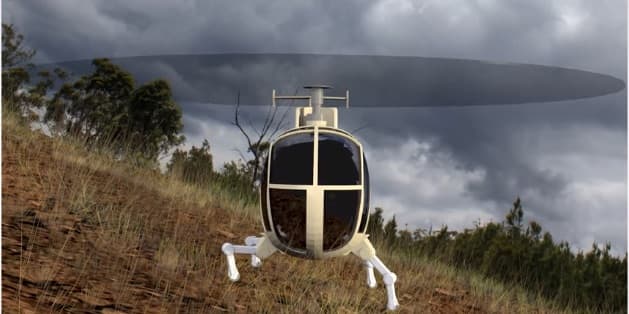Innovative Landing Gear for Helicopter Allows Landing and Takeoff On Any Irregular Surface
An innovative landing gear now allows the helicopters to takeoff and land on any surface. Developed by the engineers at DARPA - Defense Advanced Research Projects Agency (USA), the landing gear gets rid of one of the biggest problems faced by helicopters. The demonstrations have shown that helicopters using this new landing gear can land and takeoff easily from uneven, angled and even moving surface easily. This new system has been developed as a part of DARPA's 'Mission Adaptive Rotor' aka MAR program at the Georgia Institute of Technology.

Helicopters are incredibly useful because of their maneuverability in the air. They've been used for rescue operations in disaster hit areas, for surveillance and by the defence forces in war zones. The helicopters need a plain surface to land which limits their use in several situations that demand the helicopters to land on irregular surfaces. The new landing gear solves this problem in an interesting way.
The new landing gear swaps the traditional system with a new, adaptive one. It comprises of four 'legs' that can fold up to occupy very limited space alongside the fuselage. These legs are equipped with various sensors that can detect the type of terrain the helicopter is about to land on. The legs then synchronise with each other and the main body of the helicopter to touch the surface. The system is intelligent enough to accurately determine the angle of the surface so that the blades do not touch the land at any point of time. The video below shows the entire system in action :
Ashish Bagai, the program manager for MAR says that the new landing gear has demonstrated that the helicopters can now take off and land on any surface that would be impossible with the standard one. He says the advantages of the new system are numerous; like the hard landing would now not risk the damage to the blades. Helicopters can now land on slopes up to 20 degrees, which is about twice the current limit. The helicopters will now be able to land on ships even when the sea is violent.
Bagai says that even with the modest increase in the overall weight of the landing gear, the advantages of the new system are significant. The system is currently undergoing development at the Georgia Institute Of Technology.
Source: #-Link-Snipped-#

Helicopters are incredibly useful because of their maneuverability in the air. They've been used for rescue operations in disaster hit areas, for surveillance and by the defence forces in war zones. The helicopters need a plain surface to land which limits their use in several situations that demand the helicopters to land on irregular surfaces. The new landing gear solves this problem in an interesting way.
The new landing gear swaps the traditional system with a new, adaptive one. It comprises of four 'legs' that can fold up to occupy very limited space alongside the fuselage. These legs are equipped with various sensors that can detect the type of terrain the helicopter is about to land on. The legs then synchronise with each other and the main body of the helicopter to touch the surface. The system is intelligent enough to accurately determine the angle of the surface so that the blades do not touch the land at any point of time. The video below shows the entire system in action :
Bagai says that even with the modest increase in the overall weight of the landing gear, the advantages of the new system are significant. The system is currently undergoing development at the Georgia Institute Of Technology.
Source: #-Link-Snipped-#
0
